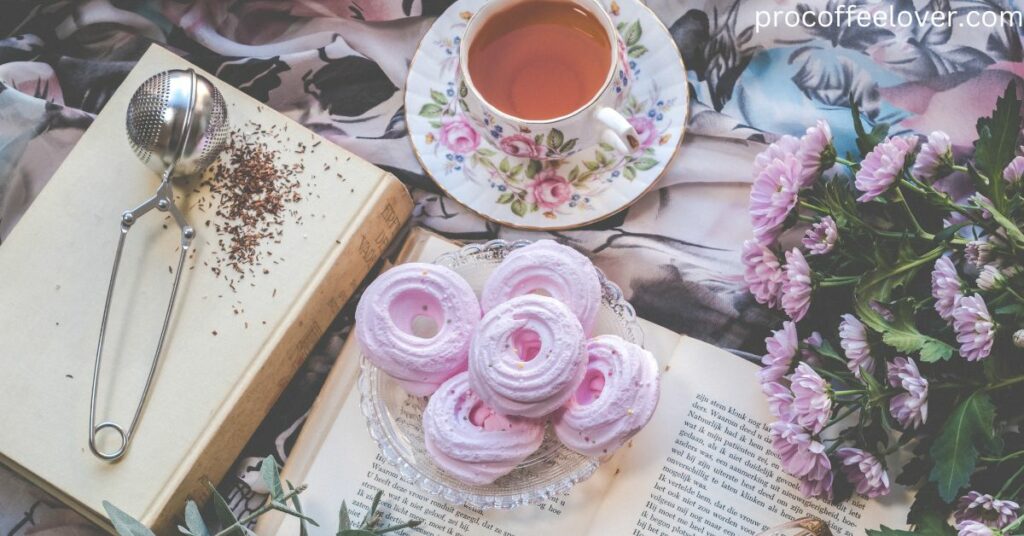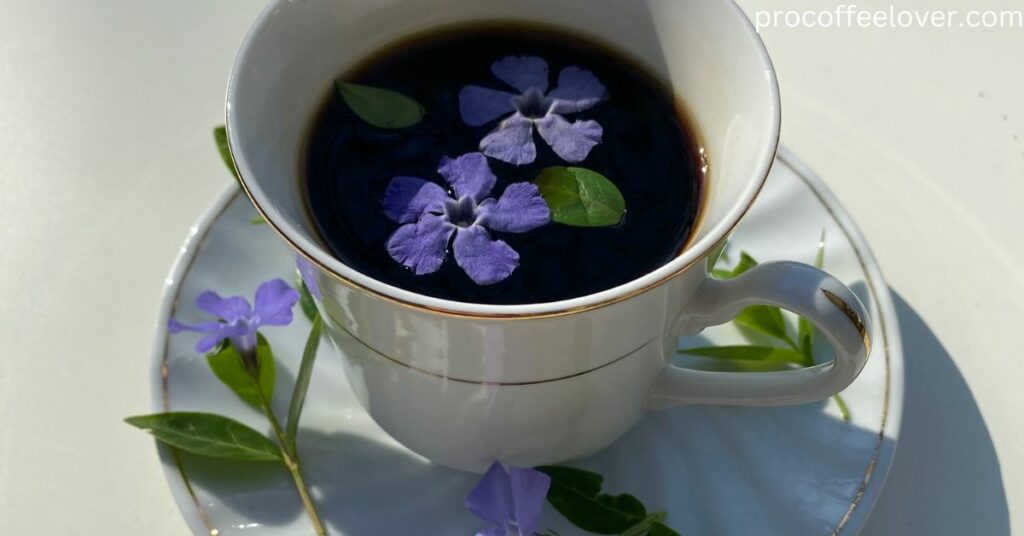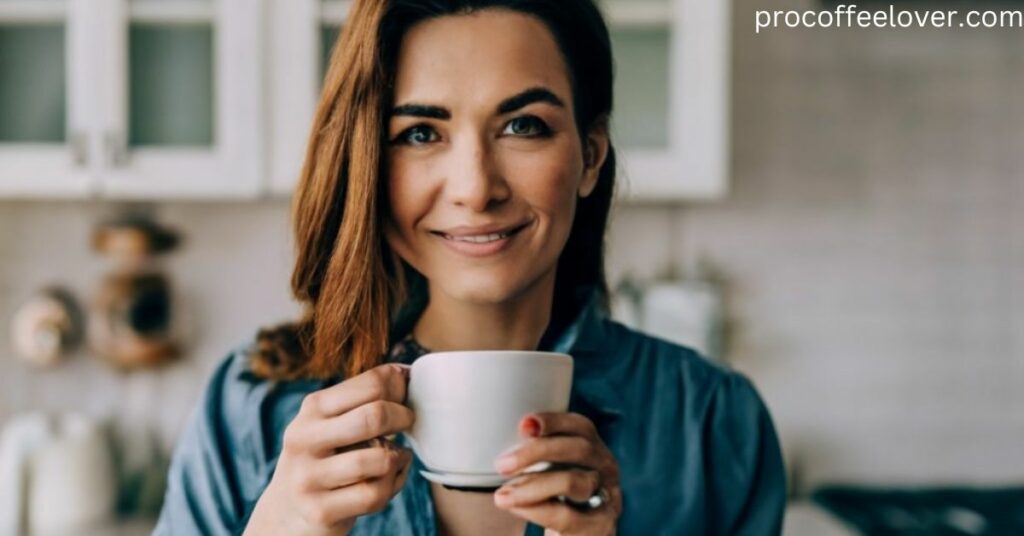Today we will discuss can you make tea in a coffee maker.Tea is e most famous product in this era on the planet. With origins dating back thousands of years, tea drinking is deeply ingrained in many cultures and daily rituals. In recent years,
coffee has also exploded in popularity and coffee makers have become a staple appliance in many homes and offices. But what if you’re a tea drinker who only has access to a coffee maker?
Can you use a coffee maker to brew tea? Or can you make tea in coffee maker?The short answer is yes, you can make tea in a coffee maker. However, there are some important considerations to keep in mind to make the best cup of tea possible with this unorthodox brewing method.
How Does Brewing Tea In A Coffee Maker Work?
Coffee makers and tea kettles/pots brew their beverages differently. Here’s a quick overview of the critical differences in the operation of these devices:
Coffee makers use hot water to extract flavor, oils, and compounds from ground coffee beans. The brewing process relies on gravity, with hot water dripping onto the coffee grounds and filtering into a carafe. Coffee makers reach a temperature of 195-205°F.
Electric kettles rapidly boil water and then shut off once the selected temperature is reached. Many have variable temperature settings to accommodate different types of tea. Tea is then steeped in the hot water for a prescribed time to extract flavor from the tea leaves or bags.
Stovetop kettles are heated on the stovetop, bringing the water to a rolling boil. The boiling action helps impart flavor from loose tea leaves. The kettle is removed from heat, and the tea is steeped to the desired strength.
So, while coffee makers and electric kettles employ slightly different heating methods, both can produce hot water at the appropriate temperature for brewing most teas. However, there are some limitations to keep in mind when using a coffee maker.
Pros and Cons of Using a Coffee Maker to Brew Tea

Pros:
Convenience
For tea drinkers with only a coffee maker, it provides a convenient way to brew tea—no need to buy a separate kettle or pot.
Familiar Process
Brewing tea in a coffee maker follows a similar hands-off approach of adding tea bags/leaves to the filter basket, pouring water into the reservoir, and waiting for it to brew directly into a carafe.
Timer Function
Many coffee makers have programmable timers that allow you to wake up to freshly brewed tea.
Temperature Control
Some coffee makers allow you to select a brewing temperature, which can be helpful for delicate herbal and green teas.Also, see more about Is coffee high in arginine.coffee.
Cons:
No Temperature Variability
Unlike kettles, most basic coffee makers only reach one set high temperature around 200°F. They can’t be adjusted for different tea types.
Over Extraction
The constant hot water dripping over tea bags/leaves tends to over-extract them compared to the brief steeping time in pots/mugs. This can make the tea taste stronger and pleasure-full.
Small Batches
Standard coffee makers are designed to make full pots, around 10-12 cups. Brewing a single serving of tea isn’t practical.
No Boiling
The water in coffee makers doesn’t reach a full boil, which may mute some of the aromatic volatile compounds in teas.
Cleaning
Coffee residue and oils left in the coffee maker can impact tea flavor. The equipment needs thorough cleaning between uses.
Ways To Blend Tea In A Coffee Maker
While coffee makers aren’t the ideal tea brewing equipment, there are some tricks you can use to make the best cup of tea possible if a coffee maker is your only option:
Use Larger or loose tea bags
The constant hot water dripping in a coffee maker quickly overextracts smaller tea bags. Opt for larger pyramid bags with more tea or a reusable filter with loose tea leaves.
Select Hearty Teas
Black and herbal blends are better to over-extraction than delicate green and white teas. The constant hot water steeps out more flavor from robust teas.
Use Fewer Tea Bags
To prevent over-extraction, cut the amount of tea leaves/bags in half compared to a standard steeping method. You can consistently brew a second pot if the first needs to be stronger.
Stop The Brewing
Many coffee makers allow you to pause the mid-brew cycle after reaching the desired strength. This prevents over-extraction.
Lower the Temperature
Select a lower brew temperature, like 180°F, for green teas if possible. This prevents bitterness.
Dilute The Tea
Brew tea at full strength, then dilute with cool water or ice to taste to counteract bitterness from over-extraction.
Clean Thoroughly
Remove all traces of coffee oils by descaling and cleaning out the water reservoir to prevent flavor transfer.
Use A filter
Putting the tea bags/leaves in the coffee filter basket keeps them contained versus brewing them directly in the carafe.
Preheat the carafe
Rinse it with hot water to keep the finished tea piping hot.Also,see more about Cold Brew Vs. Hot Brew Coffee
Best Teas To Brew In A Coffee Maker

While coffee makers are not the ideal brewing method for any tea, some hold up better than others. Here are some of the best teas to consider making in a coffee maker:
Black Teas
- English Breakfast
- Irish Breakfast
- Assam
- Ceylon
- Masala Chai
- Earl Grey
- Pu-erh
Black teas are hearty and typically brew well at higher temperatures. The rich flavors stand up to over-extraction reasonably well. Breakfast teas and chairs are exceptionally robust options.
Herbal Teas
- Peppermint
- Chamomile
- Hibiscus
- Rooibos
- Honeybush
- Lemon balm
- Ginger
Caffeine-free herbal teas blend nicely with hot water at a range of temperatures. The fruity, minty, and spicy flavors avoid becoming overly bitter.
Oolong Teas
- Da Hong Pao
- Ti Kuan Yin
- Ali Shan
- Milk Oolong
The fermented flavors of oolongs like milk, orchid, or honey lend themselves to brewing at high heat. The partial oxidation helps avoid grassy bitterness.
Avoid Delicate Teas
It’s best to avoid brewing green, white, and delicate herbal teas in coffee makers where the high heat can damage the flavors.
- Green teas
- White teas
- Fragrantherbals like chamomile or lavender
The vegetal, fresh flavors of green teas and the subtle essences of white teas get lost and taste bitter when over-extracted. Gentle florals also become muted.
Get The Best Results Making Tea In A Coffee Maker

While coffee makers aren’t perfectly designed for brewing tea, they can produce a tasty cup of certain tea types in a pinch. Focus on selecting heartier teas in the black, oolong, chai and herbal categories, which can withstand high heat and over-extraction.
Be sure to use fewer tea bags/leaves than average and dilute or halt the brewing as needed. With some trial and error, you can figure out how to make satisfying tea using equipment on hand meant for coffee.
(Can You Make Tea In A Coffee Maker)Frequently Asked Questions
Should You Put The Tea Bags Directly In The Carafe Or The Filter Basket?
It’s best to place tea bags or loose tea in the coffee maker’s filter basket just as you would with ground coffee. This prevents loose tea leaves from escaping into the finished brewed tea in the carafe. It also allows you to remove the tea at the desired strength before over-extraction sets in.
How Many Tea Bags Should You Use?
Cut the amount of tea in half compared to a standard steeping method. Start with one tea bag for a 6-cup (48 oz) coffee maker and two bags for a 10-12 cup machine. You can always add more later if the flavor needs to be stronger.
What’s The Ideal Water temperature For Tea In A Coffee Maker?
Aim for a brewing temperature of around 180°F, suitable for most black, oolong and herbal teas. Select a lower temp, like 165°F, for green teas if possible. Always use the coffee maker’s hottest setting for herbal tisanes and black teas.
Should You Preheat The Carafe?
It’s a good idea to preheat the glass carafe before brewing tea in a coffee maker. Rinse it out with hot water from the tap. This helps the finished brewed tea stay steaming hot.
How Frequently Do You Need To Clean The Coffee Maker For Tea?
It’s essential to thoroughly clean the coffee maker about every 2-3 uses when switching between brewing coffee and tea. Be sure to describe it to remove any buildup that could impart flavor.
